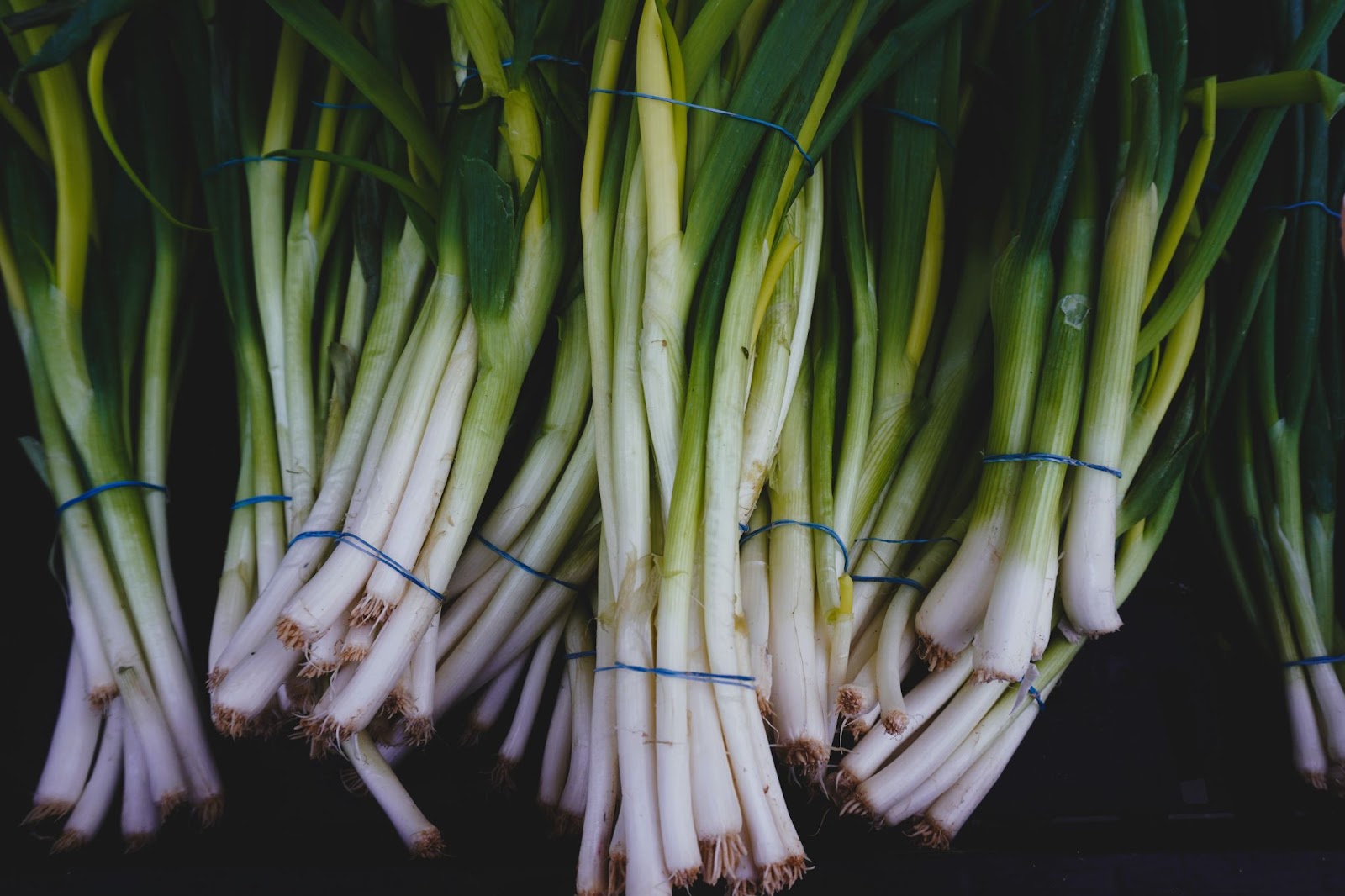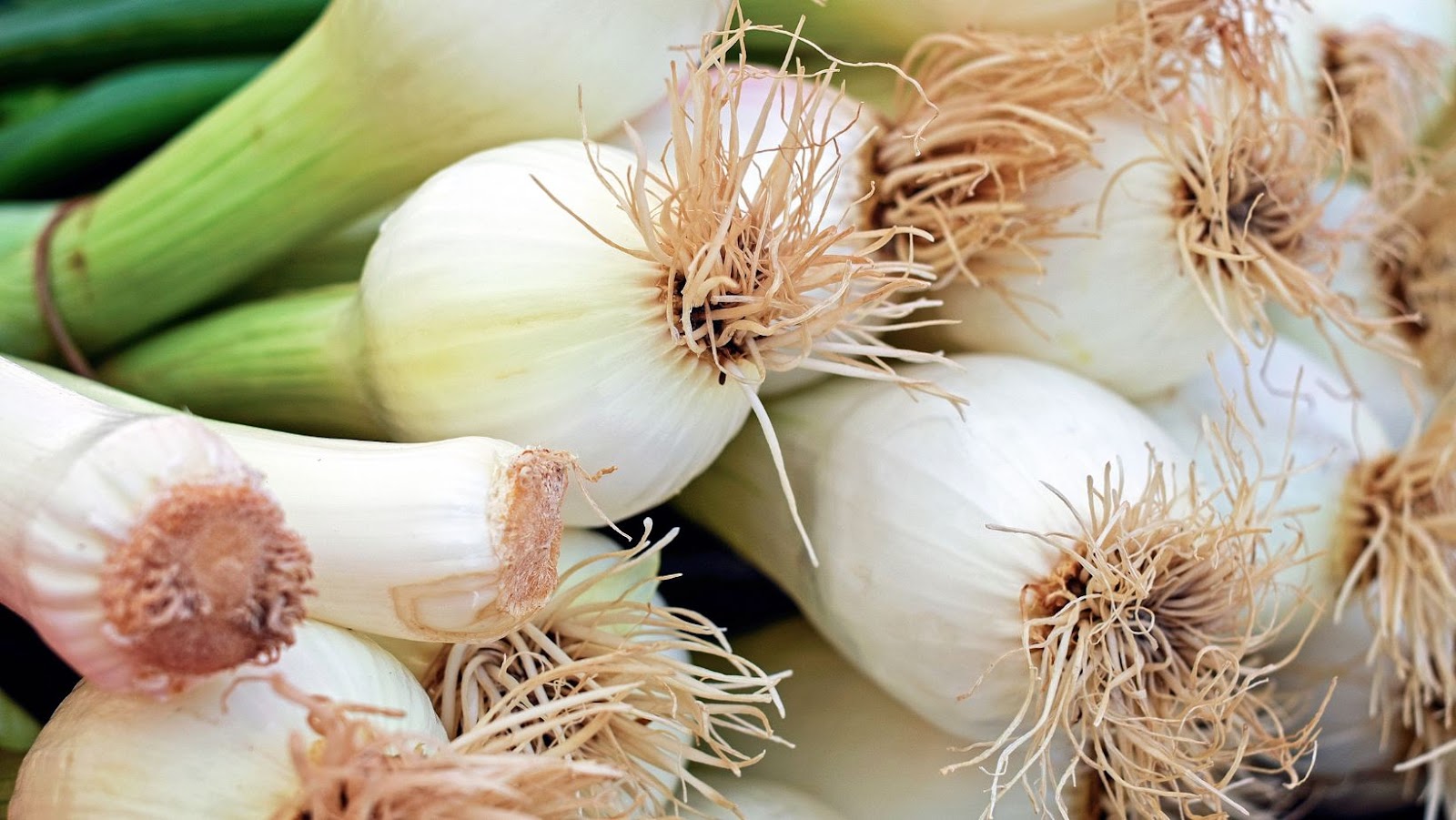Are you wondering whether to plant chives or spring onions in your garden? Both are great choices, but which one is right for you? Here are a few tips to help you decide.
Are Chives And Green Onion The Same
Chives and spring onions are two vegetables that are often used interchangeably in recipes. They have a similar taste and can be used in many of the same dishes, but there are also some key differences that you should be aware of before using them in your cooking.
Chives are a member of the onion family, but they have a milder flavor than most onions. They can be used fresh or dried, and they are often used as a garnish or added to soups and salads for flavor. Chives also have a pretty purple flower that can be used for decoration.
Spring onions, on the other hand, are actually a type of onion. They have a stronger flavor than chives and are usually used in dishes like stir-fries and soups. Spring onions also have a bulb at the base that can be eaten.
Why Grow Chives And Spring Onions?
Chives and spring onions are two of the most versatile vegetables you can grow in your garden. They can be used in a wide variety of dishes, from soups and salads to main courses and side dishes. Plus, they’re relatively easy to grow and care for.
Here are a few tips to help you get the most out of your chives and spring onion plants:
-Chives prefer full sun but will tolerate partial shade. Spring onions should be grown in full sun.
-Both chives and spring onions prefer well-drained soil.
-Chives can be planted as early as 4 weeks before the last frost date. Spring onions can be planted 2-3 weeks before the last frost date.
-Chives can be direct seeded or transplanted into the garden. Spring onions should be started indoors and then transplanted outdoors.
-Chives will self-seed if allowed to flower. To prevent this, cut back the flower stalks as they appear.
-Chives can be harvested anytime during the growing season. Spring onions should be harvested when they reach the desired size (usually 6-8 inches).
-To store chives, cut them back to 1 inch above ground level and place them in a glass or vase filled with water. Store in a cool, dark place. Spring onions can be stored in a plastic bag in the refrigerator for up to 2 weeks.
The Benefits of Growing Chives And Spring Onions
Chives and spring onions are two very popular vegetables that are often used in culinary dishes all around the world. While they may look similar, these two vegetables actually have quite a few differences. For one, chives are a type of onion that belongs to the Allium family, which also includes garlic, leeks, and shallots. On the other hand, spring onions are not technically onions at all; instead, they are actually young shoots of bulb onions that have been harvested early.
So, what are the benefits of growing chives and spring onions?
For one, both of these vegetables are very low in calories and fat-free, making them a great addition to any healthy diet. They are also a good source of dietary fiber, which is important for maintaining a healthy digestive system. In addition, chives and spring onions are rich in vitamins and minerals such as vitamin C, potassium, and iron.
Another benefit of growing these two veggies is that they are very easy to grow. Chives can be grown indoors or outdoors in pots or gardens, and they require very little maintenance. Spring onions, on the other hand, should be grown outdoors in well-drained soil in an area that receives full sunlight.
If you are looking for a way to add some flavor to your dishes without adding any calories or fat, then growing chives and spring onions is a great option. Not only are they good for your health, but they are also easy to grow and require very little maintenance.
The Best Time To Plant Chives And Spring Onions
Basics of planting chives and spring onions
The best time to plant chives and spring onions is in the spring, after the last frost. You can also plant them in the fall, about 6-8 weeks before the first frost.
When choosing a spot to plant your chives and spring onions, look for an area that gets full sun. They will also do well in partial shade, but won’t produce as many leaves
Chives and spring onions are relatively easy to grow and don’t require a lot of care. They are also fairly tolerant of different soil types, as long as the soil is well-drained. If you are planting them in pots, make sure to use a potting mix specifically designed for herbs.
To plant chives and spring onions, start by loosening the soil with a spade or a trowel. Create a hole that is twice the width of the plant’s root ball and just as deep. Gently remove the plant from its pot or container and loosen the roots before placing it in the hole. Backfill with soil and water well. Chives and spring onions don’t need to be fertilized, but if you want to give them a boost, you can add some compost to the planting hole.

How To Plant And Care For Chives And Spring Onions
Chives and spring onions are two of the most popular and versatile herbs used in cooking. Both have a mild onion flavor that can enhance a variety of dishes, from soups and sauces to salads and main courses.
While they are often used interchangeably, there are some key differences between chives and spring onions. Chives (Allium schoenoprasum) are a member of the onion family, but they have a much milder flavor than most onions. They also have a slender, hollow leaf that is green in color. Spring onions (Allium cepa), on the other hand, have a stronger onion flavor and a solid, white leaf.
Knowing how to plant and care for chives and spring onions is essential for any gardener or cook who wants to make the most of these tasty herbs. Here are some tips to get you started:
-Chives can be planted in either early spring or fall, while spring onions should be planted in early spring.
-Chives prefer cool weather and will bolt (go to seed) if the temperatures get too high. Spring onions can tolerate hot weather better than chives.
-Chives can be grown from seeds, but spring onions must be started from transplants or sets.
-Chives will do best in full sun, but they can also tolerate partial shade. Spring onions need full sun to produce the best results.
-Chives can be harvested anytime after they reach 6 inches in height. Spring onions should be harvested when they reach 4-6 inches in height.
-To harvest chives, cut the leaves about 1 inch above the ground with a sharp knife or scissors. To harvest spring onions, pull them out of the ground by the bulb.
The Best Way To Harvest Chives And Spring Onions
You can harvest chives and spring onions at any time during the growing season. However, for the best flavor, it is best to wait until the plants are at least 6 inches tall.
To harvest chives, cut the stems about 1 inch above the ground using sharp scissors or a knife. You can also harvest chives by pulling up the entire plant. If you decide to pull up the entire plant, make sure to replant chives in a new location.
To harvest spring onions, cut the stem about 1 inch above the ground using sharp scissors or a knife. If you want to harvest the entire plant, pull up the plant and replant in a new location.

Using Chives And Spring Onions In Your Cooking
Chives and spring onions (also known as scallions) are two of the most popular and versatile herbs used in cooking today. Though they are often used interchangeably, there are some key differences between these two flavorful ingredients.
Chives are a member of the onion family and have a milder flavor than most onions. They are often used as a garnish or to add flavor to salads, soups, and other dishes. Chives can also be used as an herb in their own right and are a good choice for dishes that would benefit from a delicate onion flavor.
Spring onions, on the other hand, are not related to the onion family. They have a stronger flavor than chives and are often used in cooked dishes where their flavor can shine through. Spring onions are also a good choice for dishes that would benefit from some extra crunchiness, such as salads and stir-fries.
So, when should you use chives and when should you use spring onions? Here are some general guidelines:
-If you want a mild onion flavor, go with chives.
-If you want a strong onion flavor, go with spring onions.
-If you want a crunchy texture, go with spring onions.
-If you want to use them as a garnish, go with chives.
Preserving Chives And Spring Onions
You can preserve chives and spring onions by cutting them into lengths, then freezing them in ice cube trays filled with water, broth, or white vinegar. Or you can blanch them first: Blanching is a process of quickly cooking vegetables in boiling water, then shocking them in ice water to stop the cooking process. This set of operations preserves color, texture, and flavor while also killing any enzymes that might cause the vegetables to spoil while they’re stored in the freezer.